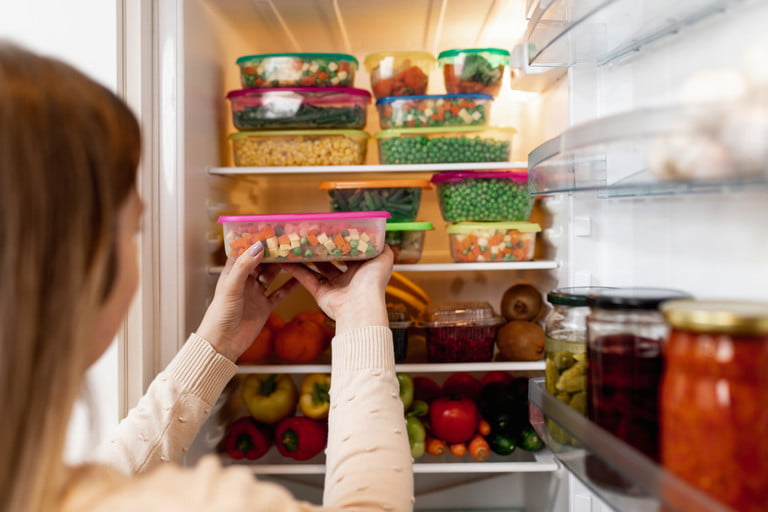Spring is here and you're not going anywhere without doing some cleaning and organizing. It's our annual way of getting a fresh start with messy zones like garages, home bars, closets, and more. One noteworthy appliance ought to be on that to-do list as well — your fridge.
It's all too easy to think that just because the fridge keeps cool, there's less of a need to organize what's inside. Not so. Just because your goods aren't going bad doesn't mean they're easy to access. Once you put a little rhyme and reason into your appliance, you'll be amazed at how much better you like spending time in your kitchen.
Here's how to get a jump-start on organizing your refrigerator.
Compartmentalize
Your shrink may tell you to do otherwise but when working with a fridge, compartmentalization is key. Your fridge is set up for this anyway, you just need to follow through. So, section things out by categories—drinks, condiments, produce, leftovers, etc. and let them live in their specific regions. It's a way to create a mental map of your fridge that you'll soon know like the back of your hand.
Part of the process involves actual containers, which will aid dramatically in terms of organization (on top of being more environmentally friendly and better at keeping odors in check). While you're at it, label things. It's easy to forget what's in a container and sometimes the container itself is translucent so you can't tell anyway. Put a name on it, you'll be glad when you're fishing around for the last of the homemade chili you made a week ago.

Leave Some Wiggle Room
Reserve some space in there. If your fridge gets too packed, you won't be able to operate easily within. That, and things will be so buried that they will go bad before you know it. Create alleyways that your arms can navigate to get to your various compartments. If you have glass bottles of beer or open sauces in the fridge, position them against a wall for protection. The wiggle room approach applies to your shelves as well, which too often get packed like sardines with your favorite mustards, pickles, hot sauces, and more. Allow them a bit of space, too (although not as much, as the stuff in the door swings more and can use a bit of stability from the crowding), so that they're easy to pluck out individually.
Line Your Shelves
Things are going to spill in there, or at least drip and build up while you're not paying attention. A quick and easy solution is to line your fridge shelves with a rubber liner of some kind or even wax or parchment paper. These liners are much easier to clean or swap out than the fridge itself. You'll appreciate a markedly less sticky base, which at its worse makes everything else it comes in contact with sticky and unsanitary.
Drippings on the Bottom
This is an old but still important rule. Keep those drippy things at the bottom, just in case. The last thing you want is some streak juice or fishy liquid following gravity's lead from the top shelf to your butter tray and fresh produce below. Even when items like this are shrink-wrapped or placed on a plate to capture the liquid, it's best to go low as they may get bumped. This is also a health move that prevents cross-contamination and possible illness, not to mention just general grossness.
Take Inventory
Alright, you can probably skip this step if you're working with a little fridge, but many of us have a full-sized animal in the kitchen. Even a counter-depth model, which doesn't run as far front to back, is still plenty big to hide things. Take stock of what you have on a weekly basis. It's a routine that only takes a couple of minutes and will help you keep things circulating in your diet, allowing for better meal planning and less ingredients going straight into the compost bin.
More Tips
Don't forget to properly seal things. One poorly enclosed slice of pizza can have your ice tasting like pepperoni. It doesn't seem like an organizational tool on the surface but it really is. When you have to dig around for the culprit when something goes bad, you often end up throwing off the tidiness of the rest of the fridge. Also, speaking of ice, don't neglect the freezer. We tend to write this part of the fridge off as a zone for long-term storage and little more. It's less used, sure, but some order there is key, too. That way, you can locate things easily and not waste too much time and energy combing through the cold.
Also, there are some things that fare better in your fridge that you might now be storing in the cupboard. Yeast, for example, does better in a cool climate. So too do opened mixers like vermouth and even amari. Open white and pink wines ought to live here and there's no harm doing the same with reds, just be sure to bring them to temperature before having a glass. Lastly, perishables can turn, even in the fridge.



